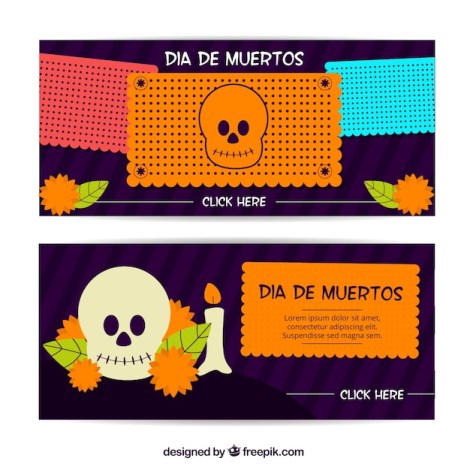Facts about the Day of the Dead

The Day of the Dead is a vibrant and colorful celebration.
It is a time to honor and remember deceased loved ones.
The holiday originated in Mexico but has spread to other countries.
The Day of the Dead is celebrated on November 1st and 2nd.
It is believed that the spirits of the dead return to visit their families during this time.
Families create altars, called ofrendas, to welcome the spirits back.
Marigolds are used to decorate the altars because their strong scent helps guide the spirits.
Sugar skulls, or calaveras, are a traditional treat during the holiday.
People also visit cemeteries and clean and decorate their loved ones’ graves.
The holiday is a blend of indigenous beliefs and Catholic traditions.
The Day of the Dead is not a sad occasion, but rather a joyous celebration of life.
It is a time to tell stories and share memories of the deceased.
Families often gather around the gravesites for picnics and parties.
Music and dancing are integral parts of the celebration.
Traditional foods, such as tamales and pan de muerto (bread of the dead), are prepared and enjoyed.
The holiday coincides with All Saints’ Day and All Souls’ Day in the Catholic calendar.
The Day of the Dead was inscribed in the UNESCO Intangible Cultural Heritage of Humanity list in 2008.
The celebration varies from region to region and can include parades and street performances.
Facts about the Day of the Dead part 2
During the holiday, children often receive small toys or treats called calacas.
It is believed that the spirits are drawn to the smell of their favorite foods, so families prepare their loved ones’ favorite dishes.
The Day of the Dead is a time for people to confront and overcome their fear of death.
Masks and face paint are often worn to resemble skulls or skeletons.
The holiday is a powerful reminder of the interconnectedness between life and death.
Many people observe a moment of silence at midnight on November 2nd in honor of the departed.
The holiday has gained popularity around the world due to its unique traditions and vibrant visuals.
The sugar skulls are often personalized with the names of the deceased and displayed on the ofrendas.
The holiday serves as a way to keep the memories and traditions of loved ones alive.
The Day of the Dead is a time for reflection on one’s own mortality and the impermanence of life.
It is a celebration of the cycle of life and death, and the belief in an afterlife.
The holiday showcases the richness of Mexican culture and its unique customs.
People often write poems or create artwork inspired by the Day of the Dead.
The celebration is a time for families to come together and support each other in their grief.
The holiday is an opportunity to reconnect with ancestors and seek their guidance.
The marigolds used in the celebrations are believed to have healing properties.
It is customary to offer food and drinks to the spirits to nourish them during their visit.
The holiday can be seen as a way to defy death and assert the power of life and love.
The Day of the Dead is a visually stunning festival, with vibrant colors and intricate decorations.
The holiday reminds us that death is a natural part of life and encourages us to live fully in the present.
The ofrendas often include photos and personal belongings of the deceased as a way to honor their memory.
Celebrations can last for several days, with various events and activities taking place.
The belief is that the spirits of children, known as angelitos, arrive on November 1st, followed by adult spirits on November 2nd.
The holiday is a time to express gratitude for the impact our loved ones have had on our lives.
The Day of the Dead is a cultural celebration that transcends religious beliefs and unites people in honoring the dead.
The celebration is filled with laughter and joy, as families remember the funny stories and quirks of their departed loved ones.
The Day of the Dead teaches us to embrace death as an integral part of the human experience and to celebrate the continuation of life beyond death.

